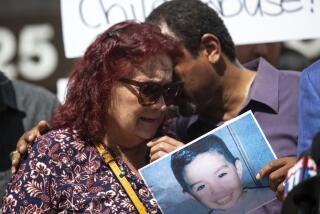Too young for solitary
At probation camps and juvenile halls, where delinquent minors are often held, officials sometimes have no choice but to temporarily isolate disruptive juveniles for the safety of other youths and camp personnel. But as an hour turns into a day or more — and reports from some camps and halls suggest it can turn into a week or a month — temporary isolation turns into solitary confinement, a brutal practice when employed against anyone, and an especially cruel way to treat a juvenile who is still developing and does not yet have the emotional skills to bounce back from such treatment.
And if the juvenile is already mentally disturbed, solitary confinement can further degrade his or her mental state. It can make treatment more difficult and, some studies suggest, suicide more likely.
Solitary confinement is ultimately a mental health issue for anyone who goes through it, and the practice, if it is to continue, should at the very least be documented for public review and monitored by mental health professionals.
That’s difficult to do in California because from camp to camp and county to county, there is no consistent definition of solitary confinement. Some officials say isolation is part of their treatment programs, but it can look an awful lot like retaliation, punishment or professional incompetence. The same is true in state youth facilities, where so-called temporary detention and even treatment programs can in effect be 23-hour-a-day lockdowns.
Juvenile justice officials should at the very least have to certify that mental health evaluations were part of the decision-making process for each juvenile, and they should document all instances of solitary lockdown, under consistent standards and definitions. SB 61 by state Sen. Leland Yee (D-San Francisco) would require such standards and documentation. It’s a bill that deserves to move forward.
The Senate has been wary, and appropriately so, of moving forward on any bill that could impose costs on counties — costs that would be passed along to the state. The budget has been cut year after year, and now, when there may be some funding available, lawmakers must decide carefully what to do with it.
In making that decision, they should keep in mind that the state’s failure to meet the mental health needs of so many Californians has led directly to the prison overcrowding crisis, and that the failure to meet the mental health needs of inmates for decades has resulted in the court order to beef up in-prison care (at enormous cost) and to release tens of thousands of prisoners. The juvenile justice system is inextricably linked to the adult system and must deal with a similar, although more vulnerable, population.
And in the end, lack of money cannot justify cruelty. With or without funding, California must more closely watch and regulate solitary confinement of juveniles.
More to Read
A cure for the common opinion
Get thought-provoking perspectives with our weekly newsletter.
You may occasionally receive promotional content from the Los Angeles Times.






